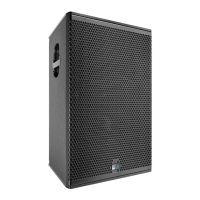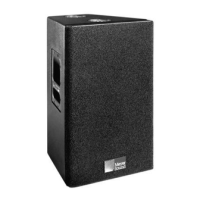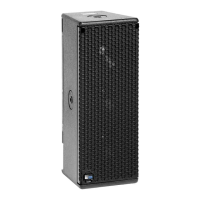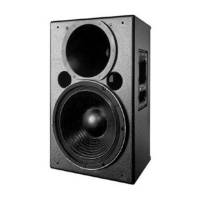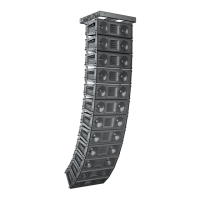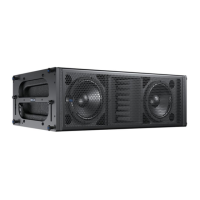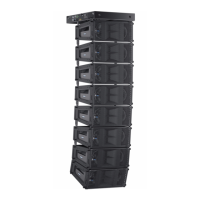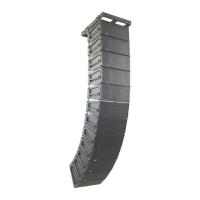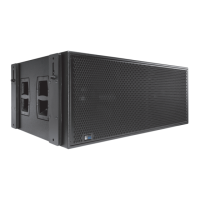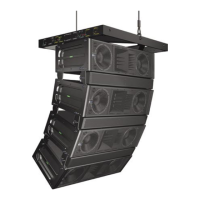UPQ-1P OPERATING INSTRUCTIONS
13
NOTE: The fan remains off at turn-on. It is con-
trolled by audio level and operates only at high
audio levels.
CAUTION: If the On/Temp LED does not light
up, or the loudspeaker does not output audio
after ten seconds, remove AC power immediately
and verify that the voltage is within the required
range. If the problem persists, contact Meyer Sound
Technical Support.
UPQ-1P CURRENT REQUIREMENTS
The current draw for the UPQ-1P loudspeaker is dynamic
and fluctuates as operating levels change. Since different
cables and circuit breakers heat up at varying rates, it is
important to understand the following types of current rat-
ings and how they affect circuit breaker and cable specifica-
tions.
Idle Current — The maximum rms current during idle
periods.
Maximum Long-Term Continuous Current — The
maximum rms current during a period of at least 10 sec-
onds. The Maximum Long-Term Continuous Current is
used to calculate temperature increases for cables, to
ensure that cable sizes and gauges conform to electrical
code standards. The current rating is also used as a rat-
ing for slow-reacting thermal breakers. In addition, the
Maximum Long-Term Continuous Current can be used to
calculate the AC looping capability of the UPQ-1P.
Burst Current — The maximum rms current during a
period of around one second. The Burst Current is used
as a rating for magnetic breakers. It is also used for cal-
culating the peak voltage drop in long AC cable runs
according to the following formula:
V pk (drop) = I pk x R (cable total)
Ultimate Short-Term Peak Current — A rating for fast-
reacting magnetic breakers.
Inrush Current — The spike of initial current presented
when powering on.
You can use the following table as a guide for selecting
cable gauges and circuit breaker ratings for the system’s
operating voltage.
The minimum electrical service amperage required by a
UPQ-1P system is the sum of the Maximum Long-Term
Continuous Current for each loudspeaker. An additional
30 percent above the minimum amperage is recommended
to prevent peak voltage drops at the service entry.
NOTE: For best performance, the AC cable
voltage drop should not exceed 10 V, or
10 percent at 115 V and 5 percent at 230 V. Make
sure that even with AC voltage drops that the AC
voltage always remains within the operating window.
ELECTRICAL SAFETY ISSUES
Pay close attention to these important electrical and safety
issues.
The UPQ-1P loudspeaker requires a grounded outlet.
Always use a grounded outlet and plug.
UPQ-1P Current Draw
Current Draw 115 V AC 230 V AC 100 V AC
Idle Current 0.50 A rms 0.28 A rms 0.56 A rms
Maximum Long-Term
Continuous Current
3.9 A rms 2.0 A rms 4.4 A rms
Burst Current 7.0 A rms 3.9 A rms 8.2 A rms
Ultimate Short-Term
Peak Current
18.0 A peak 10.5 A peak 20.0 A peak
Inrush Current 6.0 A peak 8.4 A peak 7.1 A peak
Earth ground
Chassis ground

